




Attending live theatre is a unique experience with many valuable educational and social benefits. To ensure that all audience members are able to enjoy the performance, please take a few minutes to discuss the following audience etiquette topics with your students before you come to Hartford Stage.
• How is attending the theatre similar to and different from going to the movies? What behaviors are and are not appropriate when seeing a play? Why?
• Remind students that because the performance is live, the audience affects the performance. No two audiences are exactly the same and no two performances are exactly the same—this is part of what makes theatre so special!
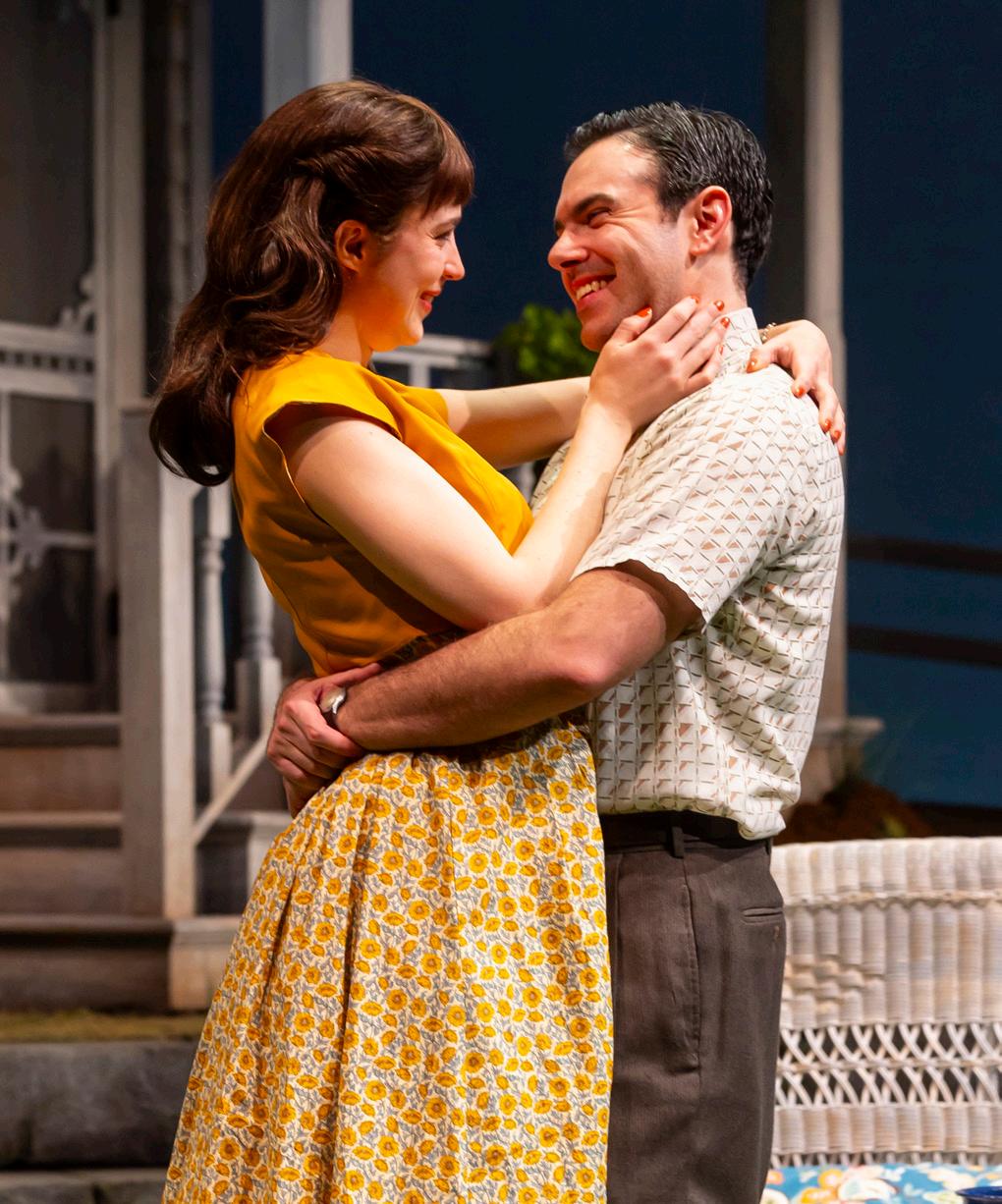
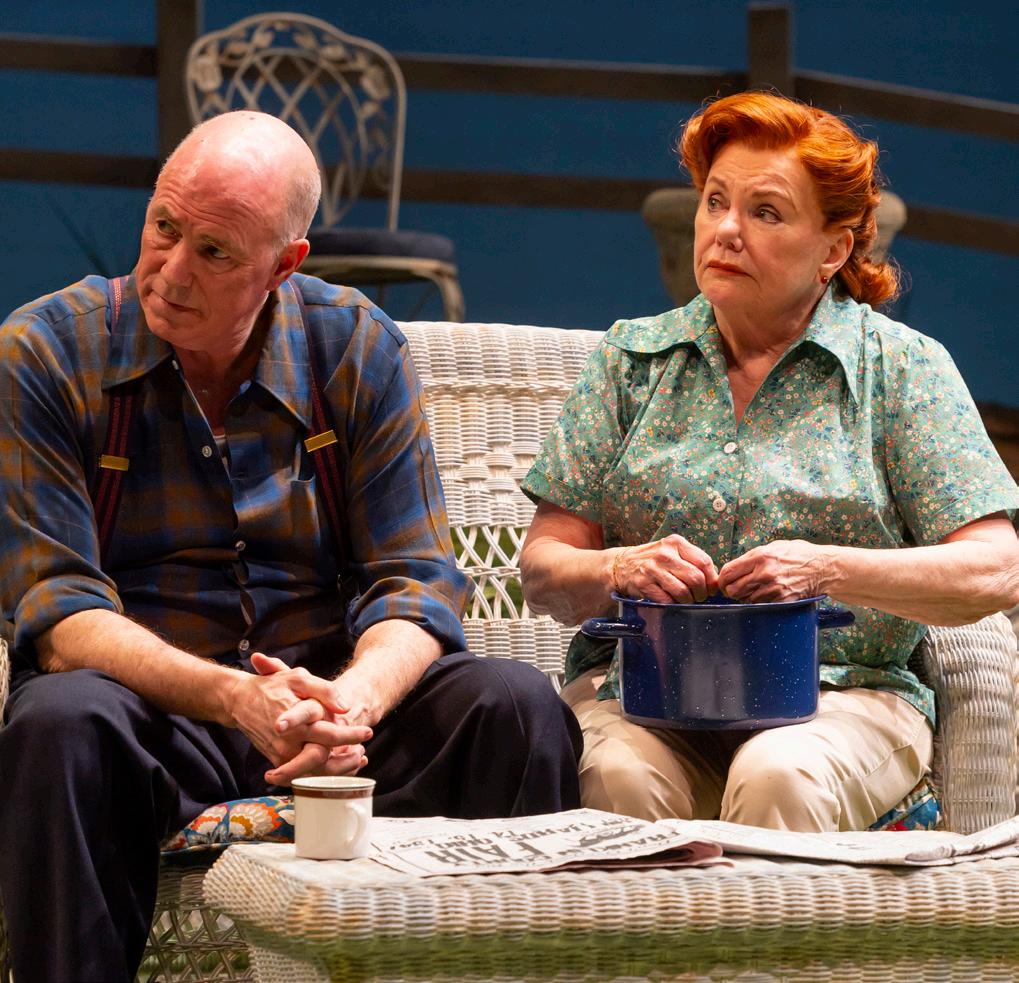
• Theatre should be an enjoyable experience for the audience. Audience members are welcome to applaud when appropriate and laugh at the funny moments. Talking is distracting to other audience members and the actors on stage. Theatres are constructed to carry sound efficiently!
• Any noise or light can be a distraction, so please remind students to make sure their cell phones are turned off. Students should not text, or take photos or video during the performance.
• Students should sit with their group as seated by the Front of House staff and should not leave their seats once the performance has begun. Students will have the chance to get a drink or snack, eat lunch, or use the restroom at intermission.
Arthur Miller (1915–2005) was born in New York City and studied at the University of Michigan. His plays include The Man Who Had All the Luck (1944), All My Sons (1947), Death of a Salesman (1949), The Crucible (1953), A View from the Bridge and A Memory of Two Mondays (1955), After the Fall (1964), Incident at Vichy (1964), The Price (1968), The Creation of the World and Other Business (1972), The Archbishop’s Ceiling (1977), The American Clock (1980) and Playing for Time (1980). Later plays include The Ride Down Mt. Morgan (1991), The Last Yankee (1993), Broken Glass (1994), Mr. Peters’ Connections (1998) and Resurrection Blues (2002). Among his other works are Situation Normal (1944), the novel Focus (1945), screenplay The Misfits (1960), and texts for In Russia (1969), In the Country (1977), and Chinese Encounters (1979), three books in collaboration with his wife, photographer Inge Morath. Memoirs include ‘Salesman’ in Beijing (1984), and Timebends, an autobiography (1987). Short fiction includes the collection I Don’t Need You Any More (1967), the novella Homely Girl, a Life (1995) and Presence: Stories (2007). Essay collections published in his lifetime include The Theater Essays of Arthur Miller (1978) and Echoes Down the Corridor: Collected Essays 1944–2000, as well as individually published volumes ‘The Crucible’ in History (2000) and On Politics and the Art of Acting (2001). He was awarded the Avery Hopwood Award for Playwriting at University of Michigan in 1936. He twice won the New York Drama Critics Circle Award, received two Emmy Awards and three Tony Awards for his plays, as well as a Tony Award for Lifetime Achievement. He was named Jefferson Lecturer for the National Endowment for the Humanities in 2001. Among other honors, he was awarded the Prix Molière of the French theater, the 2002 Prince of Asturias Award for Letters, the 2003 Jerusalem Prize, the Pulitzer Prize for Drama, and the John F. Kennedy Lifetime Achievement Award.

WWII made the US a world power and an economic world leader, with war production propelling the United States economy from Depression era levels to a robustness that hadn’t ever been seen. After the events of December 1941 put the US at war with Japan and Germany, President Franklin Delano Roosevelt (FDR) set staggering goals for the nation’s factories: 60,000 aircraft in 1942 and 125,000 in 1943; 120,000 tanks in the same time period and 55,000 antiaircraft guns.
Prior to that time, America’s military preparedness was not that of a nation expecting to go to war. In 1939, the United States Army ranked only thirty-ninth in the world, with a cavalry force of 50,000 and horses to pull the artillery. Americans were reluctant to participate in the conflict that had spread throughout Europe and Asia; we were still recovering from the ten-year ordeal of the Great Depression. FDR did what he could to coax an unwilling nation to focus on military preparedness. The contention was that, although the American military wasn’t yet equal to the Germans or the Japanese, American workers could mobilize to build ships and planes faster than the enemy could sink them or shoot them down.
When the time came, mobilize we did: companies already engaged in defense work expanded. Factories that had previously made everything from automobiles to waffle irons were now producing munitions, bombs, planes, ships and other war material exclusively.
US workers played a vital role in the production of war-related materials. US citizens flocked to meet the demand for labor in industrial production, relocating within the country in search of defense jobs, often for more pay than they previously had ever earned. Ethnic groups such as African Americans and Hispanics found job opportunities as never before. Women also began securing jobs as welders, electricians and riveters in defense plants. Until that time, such positions had been strictly for men only. Before the war young women typically worked for a few years, then left their jobs when they married and had children. But when the war broke out and millions of men left factory jobs to fight overseas, the government encouraged women to enter the workforce, often to do jobs they had never done before.
Article used with permission from the author and Jewel Theatre.
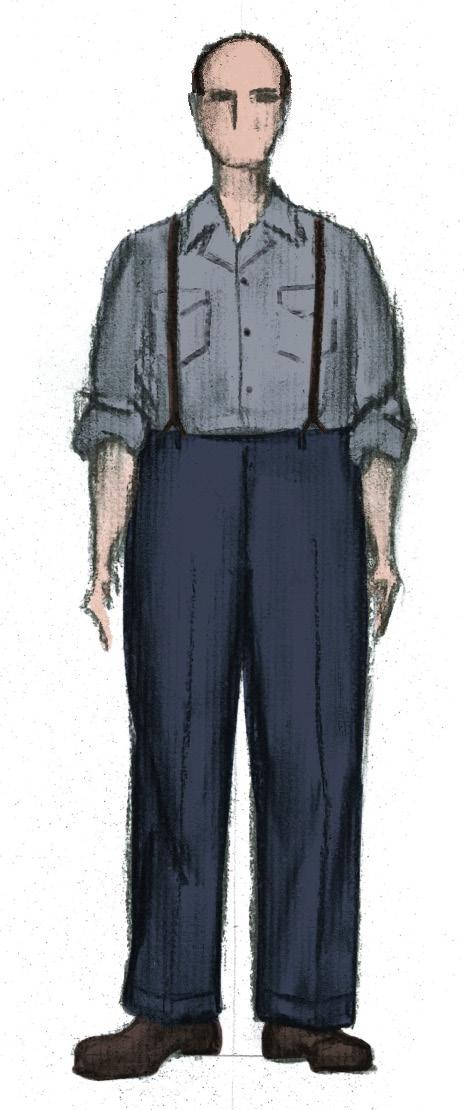
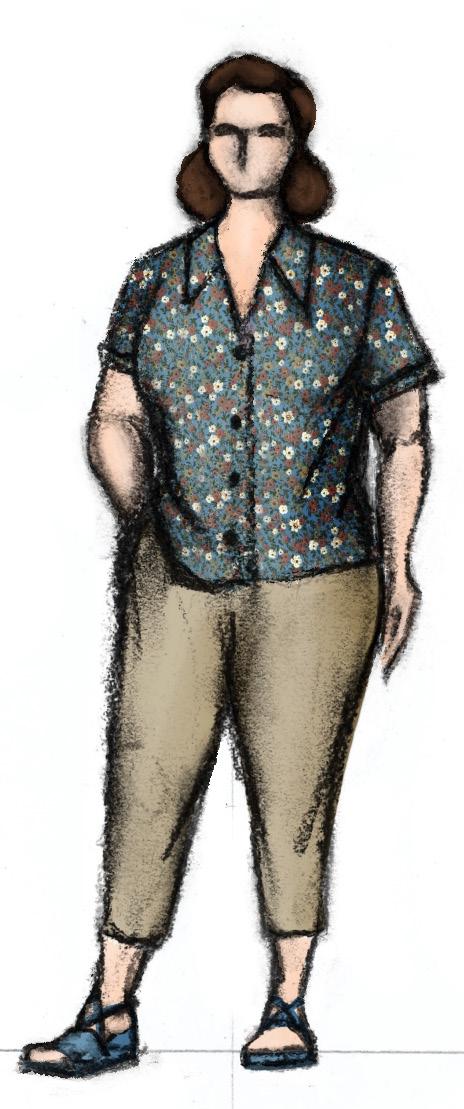
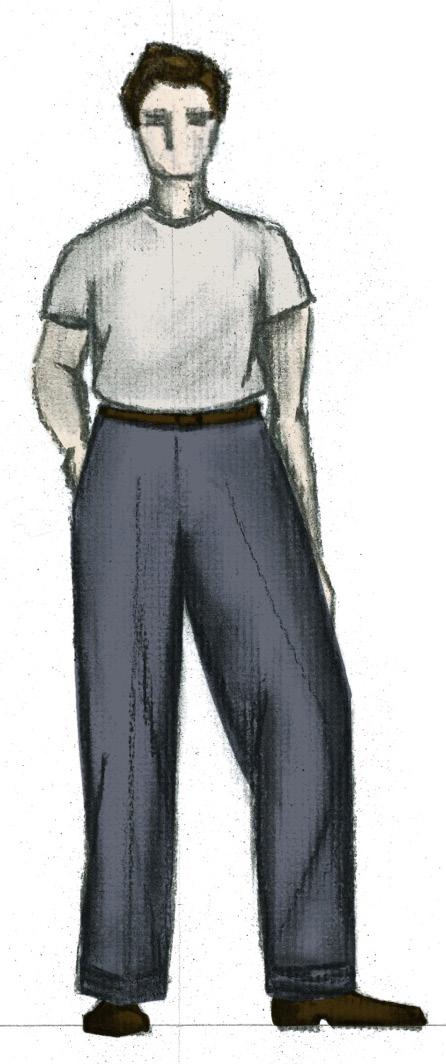
Middle aged husband/father and owner of a factory that shipped out faulty airplane parts during WWII.
Wife to Joe Keller and mother to Chris. Lives in denial and mourns her son Larry, who has been missing in action for four years.
Son of Joe and Kate, a veteran who is described as a man capable of immense affection and loyalty. Chris wishes to marry Ann Deever.


Grew up next door to the Kellers before her family left town in scandal when her father was found guilty of knowingly shipping out faulty airplane parts to the US military. She had been in a relationship with Larry Keller before his disappearance. Has been writing letters to Chris Keller for two years.
Ann’s older brother who is a veteran and lawyer in New York City. Childhood friends with Chris, now bitter toward the Keller family over his father’s imprisonment.




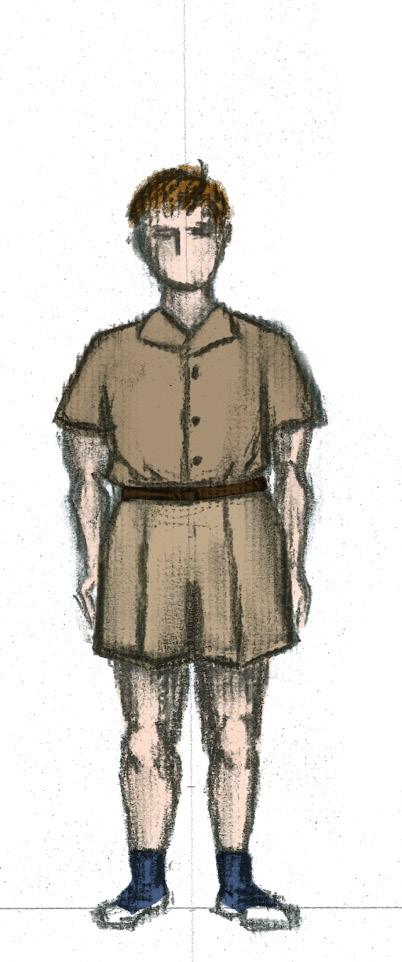
A close friend to the Kellers and a successful doctor, although he wishes to become a medical researcher. His family lives in the house once owned by the Deever family.
Sue Bayliss
Jim’s wife. Sue is a practical realist who worries about the influence Chris, with his integrity and idealism, is having on her husband.
Frank Lubey
Neighbor to the Kellers who always managed to escape the draft. Married George’s childhood sweetheart and is obsessed with horoscopes.
Lydia Lubey
Childhood sweetheart to George Deever, now married to Frank and mother to three children.
Bert
Neighborhood boy who is friends with Jim and Sue’s son, Tommy. Frequently visits the Kellers’ yard to play games with Joe.
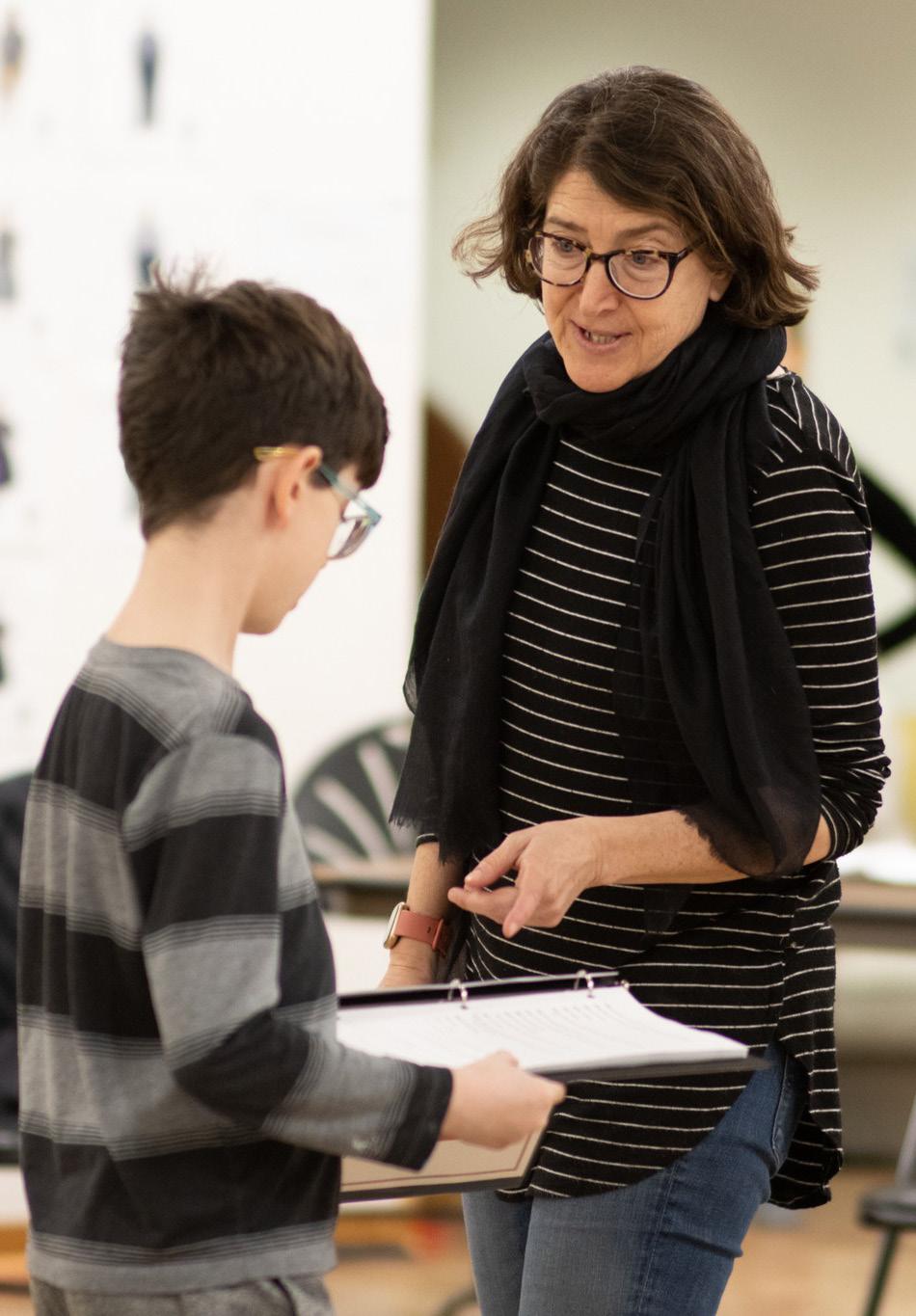
The play asks each of us to question where our responsibilities lie for each other: are we only responsible for our immediate families, or do our responsibilities extend beyond the confines of our own homes. For me, at this time in our country and in the world, when there is so much pain and suffering and it is easier than ever to look away...this play asks me to be better, to look carefully at my actions and remember they have repercussions beyond what I can perceive.
I love the lines about what we must be: “What more can we be?” asks one character and the answer is, “You can be better!” And I find that line moving every night I hear it.

I wouldn’t say hard, but I’d say an interesting challenge has been that the play is written for a “proscenium theater,” which means the stage directions are written for a Broadway-type house, where the stage is at the end of the room, like a picture frame. But at Hartford Stage we are a “thrust” theater, meaning that the stage has audience on three sides – so the challenge is how to keep all the bodies on stage moving so that everyone in every seat gets a good view of important moments!
First of all, I always want people to lose themselves watching a play. It’s such a joy to forget oneself and just listen to a great story and be moved by great acting. And then, after, for people to remember parts of it, talk to each other about what they saw - and I love when people leaving have different opinions one from the other. So I ask you, after you watch this play, ask a friend something about it, see if you agree and what you each feel about it!
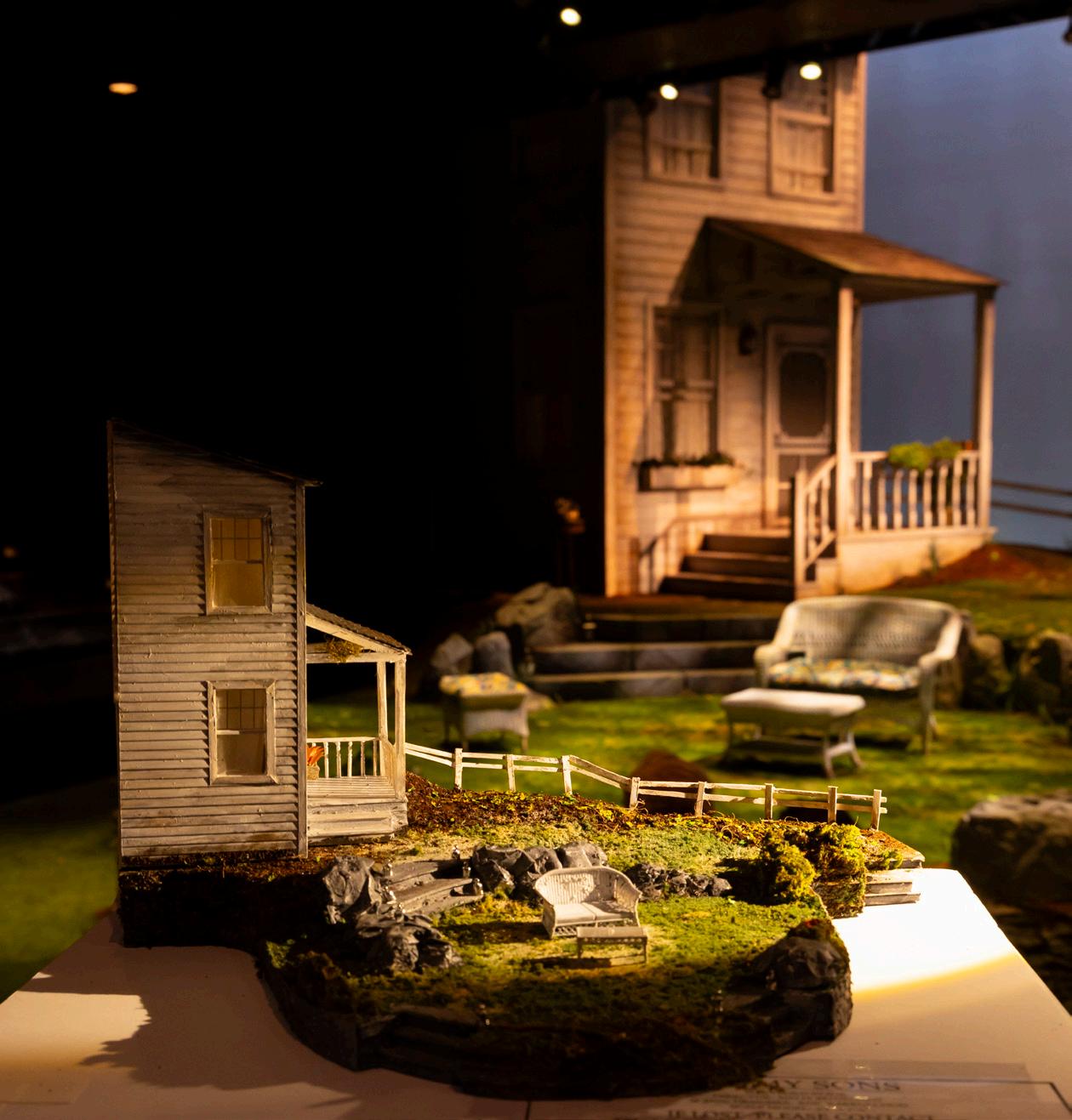
We asked set designer Riw Rakkulchon to discuss how they first approach a project like All My Sons. What was the most challenging thing about this design? What is their favorite element?
RR: Approaching a project like All My Sons by Arthur Miller requires a multifaceted approach that delves into both historical context and thematic depth.
HISTORICAL CONTEXT: All My Sons is set shortly after World War II, a time of immense social and economic change in the United States. Understanding the post-war era, including the economic boom and the societal pressure to conform to the “American Dream,” is crucial for grasping the characters’ motivations and the play’s underlying themes.
THE AMERICAN DREAM: The concept of the American Dream is central to All My Sons, in my opinion. As an immigrant artist from Thailand, the idea of the ‘American Dream’ has a very different context. The American Dream’s evolution throughout history and its portrayal in literature and art was a valuable insight into the characters’ aspirations and disillusionments. That is at the heart of design.
IMPACT OF WAR: Many characters in All My Sons are deeply affected by their experiences of the war. Psychological effects of war, including PTSD, can help in portraying the characters’ internal struggles and the ways in which their wartime experiences shape their relationships and decisions. This gave birth to the idea that the backyard should look and feel like a trench. The typography of the soils, the severity and heaviness of boulders, mimics such terrain in the battlefield.
VISUAL ART: While not explicitly mentioned in the play, examining paintings and visual art from the post-war period can offer additional perspectives on themes such as family dynamics, moral responsibility, and the consequences of unethical behavior. Artistic representations of the American Dream and the aftermath of war may provide inspiration for interpreting the play’s themes in a visual context. For this, I looked at Grant Wood and John Stewart, for example.
By approaching All My Sons with a combination of historical research, thematic analysis, and exploration of visual art, one can gain a deeper understanding of Arthur Miller’s masterpiece and effectively bring its characters and themes to life on stage.
The challenge here is to not be in the way of the words. As mentioned above, I wanted to create a place where the characters feel stuck, however; we should note that the Kellers’ back yard is supposed to be a welcoming place. Their neighbors have always swung by (asking for parsley, for example). A personal goal of mine is also to make sure this set does not look like any other All My Sons. What is the placement of the house? Where is the fallen tree? Where are the other houses, or lack thereof? How do we place significant items in the space that would allow for actors to be speaking out into the audience in a thrust stage. Creating this space in a thrust so that the movement of actors can be very dynamic, like tigers in a cage.
My favorite element was that I placed a bird’s nest on a nook of the porch. To me it signifies the mothering nature of Kate, and a great easter egg for anyone who comes over to look at the set during pre-show or intermission. In addition, our Props director added eggs inside the nest (a true easter egg).
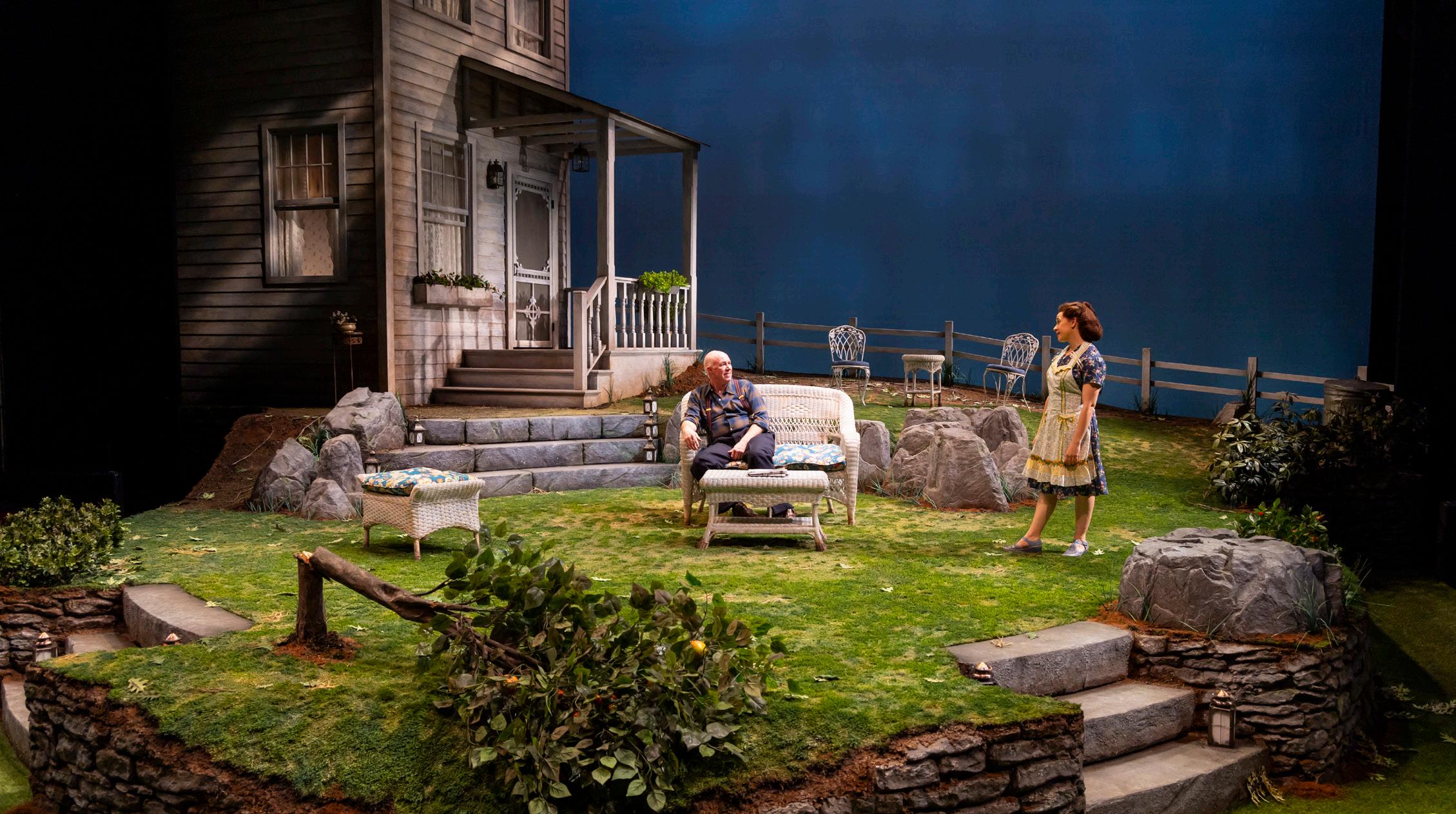
Arthur Miller found inspiration for All My Sons in a true story he read in the newspaper about a wartime small manufacturer who, like Joe Keller, was accused of sending out faulty parts to the WWII war effort. Experiment with taking inspiration from an article you find in your own local newspaper.
1. To start, first determine:
• Who is your character?
• Who are they speaking to?
• What do they want (OBJECTIVE)?
• What’s in their way (OBSTACLE)?
• Why do they need whatever it is now (STAKES)?
2. Give yourself 10-15 minutes of uninterrupted writing to try to write a monologue from this character’s point of view.
3. Read what you have written out loud to a trusted friend, classmate or family member.
4. Make revisions based on that first reading.
HARTFORD STAGE EDUCATION PROGRAMS ARE SUPPORTED BY
The BFA Endowed Fund at the Hartford Foundation for Public Giving
City of Hartford
CT State Judicial Branch
Ensworth Charitable Foundation
Enterprise Foundation
Mr. & Mrs. William Foulds Family Foundation
Hartford Foundation for Public Giving
The George A. & Grace L. Long Foundation
The MorningStar Fund
New Alliance Foundation
The Charles Nelson Robinson Fund
SBM Foundation
Scripps Family Fund for Education and the Arts
State of Connecticut
Talcott Resolution
The University of Saint Joseph
SEASON SPONSOR

EXECUTIVE PRODUCERS
Jack & Donna
Sennott
PRODUCTION SPONSORS

The John & Kelly Hartman Foundation
Don & Marilyn Allan
David & Janice Klein
For more information about education programs at Hartford Stage, please call 860-520-7244 or email education@hartfordstage.org.
Sally Speer PRODUCERS